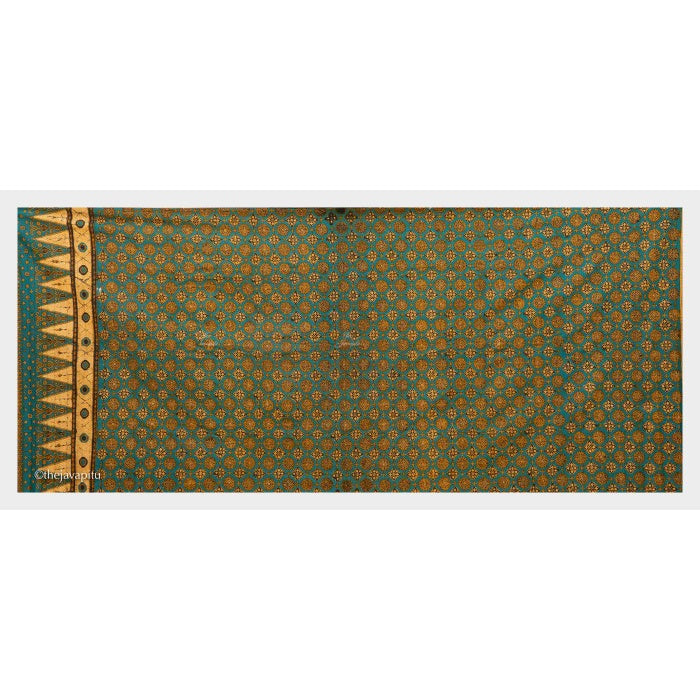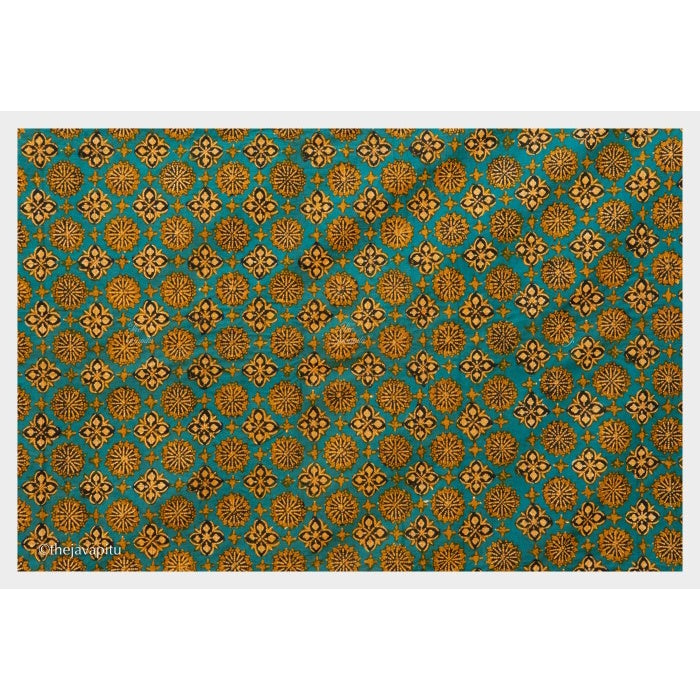Javapitu
1950s Tulis Batik Kain panjang Skirt cloth," Batik JLAMPRANG "
1950s Tulis Batik Kain panjang Skirt cloth," Batik JLAMPRANG "
Regular price
Rp 6,299,000.00 IDR
Regular price
Rp 8,998,571.00 IDR
Sale price
Rp 6,299,000.00 IDR
Unit price
per
Couldn't load pickup availability
This 1950s Tulis Batik Kain panjang Skirt cloth from Indonesia is hand drawn using the time-honored wax resist technique. The Jlamprang Pekalongan Batik motif is inspired by the intricate pattern of silk weaves from Gujarat, India with the use of a double tie or patola technique. The unique motif is made up of fried rice elements arranged like woven motifs coupled with the classic colors of Pekalongan Coastal Batik.
1950s Tulis Batik Kain panjang Skirt cloth," Batik JLAMPRANG " Indonesia. Hand Drawn batik–Indonesian Batik-Fiber arts-Vintage batikHand drawn on Finest cotton ( Tulis ). Wax resist ( Batik )
Worked in Pekalongan,Java. ca.1950s
The Jlamprang Pekalongan Batik motif gets its inspiration from batik motifs from traders from Gujarat, India.
The motif comes from a woven cloth made from Gujarat silk which is made with a double tie or patola technique.
Then by the people of Pekalongan it was adopted into a batik motif similar to the weaving motif.
Be the Jlamprang motif in the form of fried rice consisting of square and rectangular shapes arranged like woven on patola woven cloth.
Coupled with the typical colors of Pekalongan Coastal Batik, a beautiful jlamprang motif is created.
Condition : Perfect, Collectible Item, This cloth is well maintained
If you need more information, you can contact via chat or whatsapp.
----------------------------------------------------------------------------
Guarantee 100% Authentic antique batik curated by Thejavapitu, Has a selected and exclusive collection of batik from several regions in Indonesia.
Original batik is made using canting and wax (real honeycomb) which is melted with other materials as a color barrier. and this is called " Batik Tulis " / Hand Drawn batik,
And still undergoing a complicated process from processing raw materials / plain cotton fabric into a BATIK.
If batik is made using a copper mold (usually made of copper) we call it " BATIK CAP " / Stamped batik.
Can shorten the time of manufacture and reduce the cost of batik production, but this clearly affects the value of its art, because it produces repetitive batik patterns, monotonous patterns and tends to be made as a mass product.







